Audi 2013 Annual Report Download - page 26
Download and view the complete annual report
Please find page 26 of the 2013 Audi annual report below. You can navigate through the pages in the report by either clicking on the pages listed below, or by using the keyword search tool below to find specific information within the annual report.-
 1
1 -
 2
2 -
 3
3 -
 4
4 -
 5
5 -
 6
6 -
 7
7 -
 8
8 -
 9
9 -
 10
10 -
 11
11 -
 12
12 -
 13
13 -
 14
14 -
 15
15 -
 16
16 -
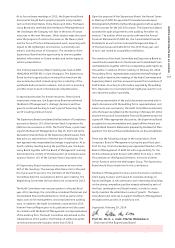 17
17 -
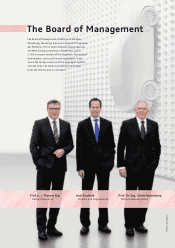 18
18 -
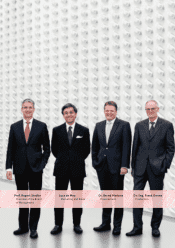 19
19 -
 20
20 -
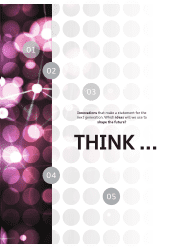 21
21 -
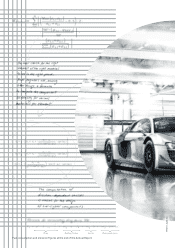 22
22 -
 23
23 -
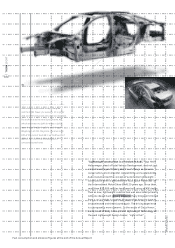 24
24 -
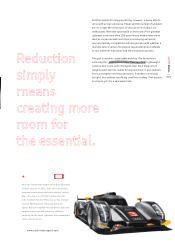 25
25 -
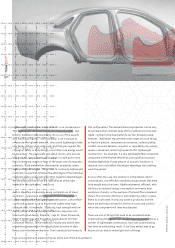 26
26 -
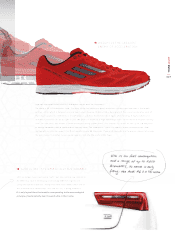 27
27 -
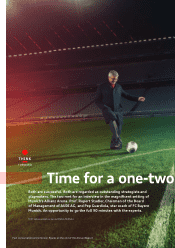 28
28 -
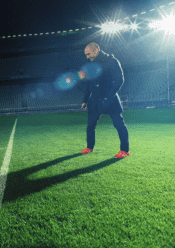 29
29 -
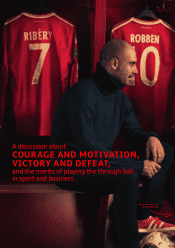 30
30 -
 31
31 -
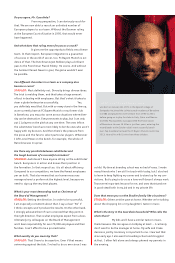 32
32 -
 33
33 -
 34
34 -
 35
35 -
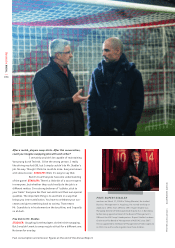 36
36 -
 37
37 -
 38
38 -
 39
39 -
 40
40 -
 41
41 -
 42
42 -
 43
43 -
 44
44 -
 45
45 -
 46
46 -
 47
47 -
 48
48 -
 49
49 -
 50
50 -
 51
51 -
 52
52 -
 53
53 -
 54
54 -
 55
55 -
 56
56 -
 57
57 -
 58
58 -
 59
59 -
 60
60 -
 61
61 -
 62
62 -
 63
63 -
 64
64 -
 65
65 -
 66
66 -
 67
67 -
 68
68 -
 69
69 -
 70
70 -
 71
71 -
 72
72 -
 73
73 -
 74
74 -
 75
75 -
 76
76 -
 77
77 -
 78
78 -
 79
79 -
 80
80 -
 81
81 -
 82
82 -
 83
83 -
 84
84 -
 85
85 -
 86
86 -
 87
87 -
 88
88 -
 89
89 -
 90
90 -
 91
91 -
 92
92 -
 93
93 -
 94
94 -
 95
95 -
 96
96 -
 97
97 -
 98
98 -
 99
99 -
 100
100 -
 101
101 -
 102
102 -
 103
103 -
 104
104 -
 105
105 -
 106
106 -
 107
107 -
 108
108 -
 109
109 -
 110
110 -
 111
111 -
 112
112 -
 113
113 -
 114
114 -
 115
115 -
 116
116 -
 117
117 -
 118
118 -
 119
119 -
 120
120 -
 121
121 -
 122
122 -
 123
123 -
 124
124 -
 125
125 -
 126
126 -
 127
127 -
 128
128 -
 129
129 -
 130
130 -
 131
131 -
 132
132 -
 133
133 -
 134
134 -
 135
135 -
 136
136 -
 137
137 -
 138
138 -
 139
139 -
 140
140 -
 141
141 -
 142
142 -
 143
143 -
 144
144 -
 145
145 -
 146
146 -
 147
147 -
 148
148 -
 149
149 -
 150
150 -
 151
151 -
 152
152 -
 153
153 -
 154
154 -
 155
155 -
 156
156 -
 157
157 -
 158
158 -
 159
159 -
 160
160 -
 161
161 -
 162
162 -
 163
163 -
 164
164 -
 165
165 -
 166
166 -
 167
167 -
 168
168 -
 169
169 -
 170
170 -
 171
171 -
 172
172 -
 173
173 -
 174
174 -
 175
175 -
 176
176 -
 177
177 -
 178
178 -
 179
179 -
 180
180 -
 181
181 -
 182
182 -
 183
183 -
 184
184 -
 185
185 -
 186
186 -
 187
187 -
 188
188 -
 189
189 -
 190
190 -
 191
191 -
 192
192 -
 193
193 -
 194
194 -
 195
195 -
 196
196 -
 197
197 -
 198
198 -
 199
199 -
 200
200 -
 201
201 -
 202
202 -
 203
203 -
 204
204 -
 205
205 -
 206
206 -
 207
207 -
 208
208 -
 209
209 -
 210
210 -
 211
211 -
 212
212 -
 213
213 -
 214
214 -
 215
215 -
 216
216 -
 217
217 -
 218
218 -
 219
219 -
 220
220 -
 221
221 -
 222
222 -
 223
223 -
 224
224 -
 225
225 -
 226
226 -
 227
227 -
 228
228 -
 229
229 -
 230
230 -
 231
231 -
 232
232 -
 233
233 -
 234
234 -
 235
235 -
 236
236 -
 237
237 -
 238
238 -
 239
239 -
 240
240 -
 241
241 -
 242
242 -
 243
243 -
 244
244 -
 245
245 -
 246
246 -
 247
247 -
 248
248 -
 249
249 -
 250
250 -
 251
251 -
 252
252 -
 253
253 -
 254
254 -
 255
255 -
 256
256 -
 257
257 -
 258
258 -
 259
259 -
 260
260 -
 261
261 -
 262
262 -
 263
263 -
 264
264 -
 265
265 -
 266
266 -
 267
267 -
 268
268 -
 269
269 -
 270
270 -
 271
271 -
 272
272 -
 273
273 -
 274
274 -
 275
275 -
 276
276 -
 277
277 -
 278
278 -
 279
279 -
 280
280 -
 281
281 -
 282
282 -
 283
283 -
 284
284 -
 285
285 -
 286
286 -
 287
287 -
 288
288 -
 289
289 -
 290
290 -
 291
291 -
 292
292 -
 293
293 -
 294
294 -
 295
295 -
 296
296 -
 297
297
 |
 |

this configuration. The desired material properties can be only
be achieved when multiple plies of this material are cross-lami-
nated – similar to the steel belts of a car tire. Schauerte adds,
however : “Additional requirements with respect to such things
as fracture pattern, temperature resistance, surface quality,
contact corrosion behavior, acoustics or reparability can quickly
reduce a material’s initial high potential for lightweight
construction.” For example, if a very lightweight fiber-composite
component in the finished vehicle has such significant acoustic
disadvantages that a large amount of acoustic insulation is
required, this could oset the weight advantage. And nothing
would be gained.
As is so often the case, the solution is in the details. And in
industrialized, cost-eective manufacturing processes that keep
both weight and price down. Highly engineered, ecient, with
the focus on reduced energy consumption and nearly total
avoidance of waste, as the example of tailored fiber placement
shows. This involves stitching or embroidering carbon or glass
fibers to a substrate. Hardly any waste is produced, and the
fibers are perfectly oriented for the force curves and loads to
which the component will later be subjected.
There are a lot of things that need to be considered when
implementing the lightweight construction philosophy. But as a
pioneer of lightweight construction, Audi will accept nothing
less than an outstanding result. It isn’t the easiest way to go.
But we do our best to make light work of things.
Lightweight construction is one of Audi’s core competences.
“But lightweight construction requires heavy thought,” says
Dr.-Ing. Karl Durst philosophically. He is one of the experts
who make Audi lighter. “Unfortunately, it isn’t enough to
simply use the lightest material, since some lightweight mate-
rials hardly deform at all under load. And that goes against the
concept of safety in body design, since little crash energy would
be absorbed.” The passionate marathon runner, who ensures
that even his running shoes don’t weigh a single gram more
than is necessary, argues in favor of the smart use of composite
materials. “Each material has characteristic properties, advan-
tages and disadvantages. The art lies in combining lightweight
materials in a way that enhances the advantages of the individual
materials while compensating for their respective disadvantages.
We are always anxious to use the right amount of the right
material in the right place,” says Durst.
Audi is therefore increasingly using combinations of steel,
aluminum, magnesium and fiber-reinforced composites of
carbon and glass fibers in lightweight construction. Carbon-fiber-
reinforced polymer is up to 60 percent lighter than high-
strength steel, for example. “Elasticity, high strength and low
density result in above-average mechanical properties com-
bined with great design freedom,” says Dr. Oliver Schauerte,
Head of Technology and Properties Development for Fiber-
Composite Plastics. These materials initially only exhibit their
tremendous properties in the longitudinal direction of their
fibers, not in the lateral direction. Their use would be limited in
PHOTOS : AUDI AG, adidas AG
Fuel consumption and emission figures at the end of the Annual Report
THINK LIGHT
026
